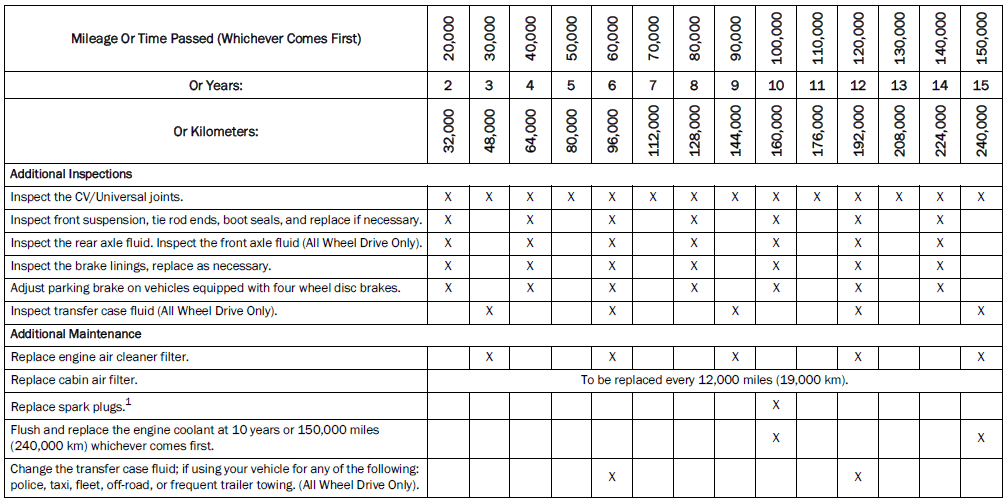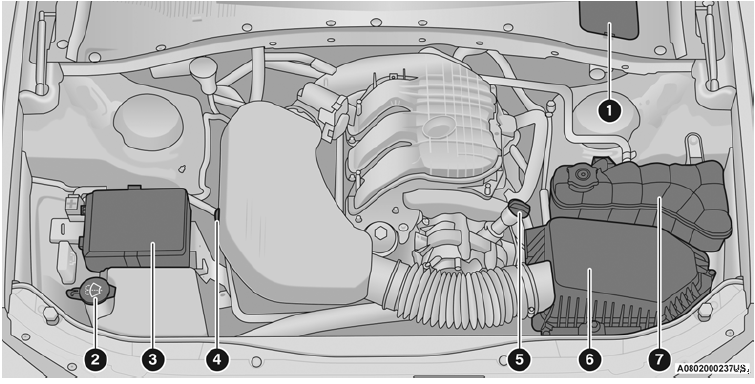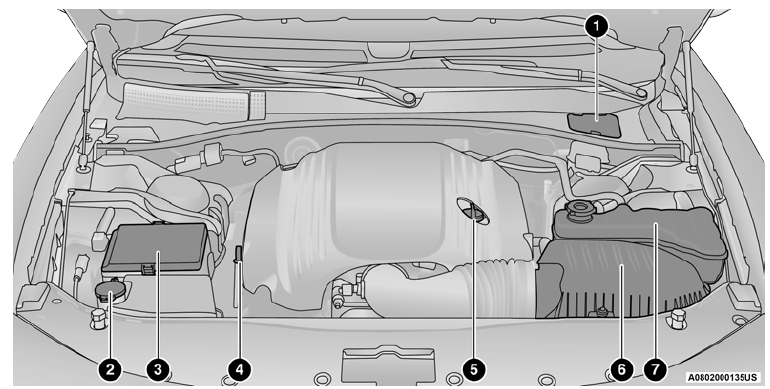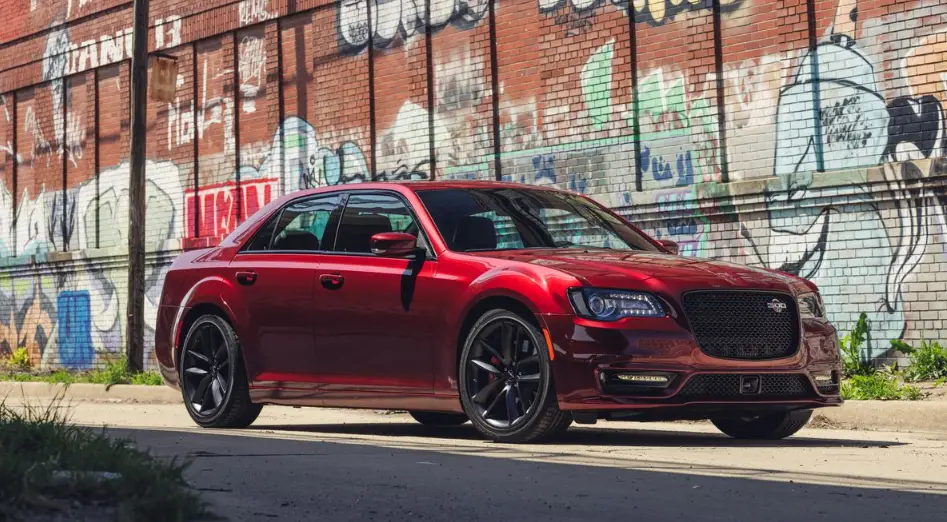2023 Chrysler 300 Maintenance Schedule
The 2023 Chrysler 300 Maintenance Schedule is meant to keep this stylish and powerful car running at its best and lasting as long as possible. Chrysler has made a detailed plan that includes important parts of normal maintenance because they want their cars to be reliable and efficient. Tasks like changing the oil and filter, rotating the tires, inspecting the brakes, and checking the fluid level are all part of scheduled maintenance. Not only do these steps improve the health of the car, but they also save gas and make it safer. Chrysler’s maintenance plan shows their commitment to making driving as smooth as possible, so owners of the 2023 Chrysler 300 can enjoy all of its features while lowering the risk of problems. Chrysler 300 owners can drive with confidence on the road knowing that their car is running at its best if they follow the service plan.
SCHEDULED SERVICING
This vehicle is equipped with an automatic oil change indicator system. The oil change indicator system will remind you that it is time to take your vehicle in for scheduled maintenance. Based on engine operation conditions, the oil change indicator message will illuminate. This means that service is required for the vehicle. Operating conditions such as frequent short trips, trailer tow, and extremely hot or cold ambient temperatures will influence when the “Change Oil” or “Oil Change Required” message is displayed.
MAINTENANCE PLAN
Required Maintenance Intervals: Refer to the maintenance schedules on the following page for the required maintenance intervals. Have your vehicle serviced as soon as possible, within the next 500 miles (805 km). The “Oil Change Required” message will be displayed in the instrument cluster and a single chime will sound, indicating that an oil change is necessary. An authorized dealer will reset the oil change indicator message after completing the scheduled oil change.
NOTE:
Under no circumstances should oil change intervals exceed 10,000 miles (16,000 km), 12 months, or 350 hours of engine run time, whichever comes first. The 350 hours of engine run or idle time is generally only a concern for fleet customers.
Once A Month Or Before A Long Trip:
- Check engine oil level.
- Check the windshield washer fluid level.
- Check tire pressure and look for unusual wear or damage. Rotate tires at the first sign of irregular wear, even if it occurs before your next scheduled service.
- Check the fluid levels of the coolant reservoir, brake master cylinder, and power steering (if equipped) and fill as needed.
- Check the function of all interior and exterior lights.
At Every Oil Change Interval As Indicated By Oil Change Indicator System
- Change oil and filter.
- Rotate the tires at the first sign of irregular wear, even if it occurs before your next scheduled service.
- Inspect the battery and clean and tighten terminals as required.
- Inspect the CV/Universal joints.
- Inspect brake pads, shoes, rotors, drums, hoses, and parking brakes.
- Inspect engine cooling system protection and hoses.
- Inspect the exhaust system.
- Inspect engine air cleaner if used in dusty or off-road conditions, and replace engine air cleaner filter if necessary.


- The spark plug change interval is mileage-based only, yearly intervals do not apply.
WARNING!
- You can be badly injured working on or around a motor vehicle. Do only service work for which you have the knowledge and the right equipment. If you have any doubt about your ability to perform a service job, take your vehicle to a competent mechanic.
- Failure to properly inspect and maintain your vehicle could result in a component malfunction and affect vehicle handling and performance. This could cause an accident.
ENGINE COMPARTMENT
3.6L ENGINE
- Brake Fluid Reservoir Access Cover
- Washer Fluid Reservoir Cap
- Power Distribution Center (Fuses)
- Engine Oil Dipstick
- Engine Oil Fill
- Engine Air Cleaner Filter
- Engine Coolant Pressure Reservoir
5.7L ENGINE
- Brake Fluid Reservoir Access Cover
- Washer Fluid Reservoir Cap
- Power Distribution Center (Fuses)
- Engine Oil Dipstick
- Engine Oil Fill
- Engine Air Cleaner Filter
- Engine Coolant Pressure Reservoir
CHECKING OIL LEVEL
To ensure proper engine lubrication, the engine oil must be maintained at the correct level. Check the oil level at regular intervals, such as every month. The best time to check the engine oil level is about five minutes after a fully warmed-up engine is shut off. Checking the oil while the vehicle is on level ground will improve the accuracy of the oil level readings.
There are four possible dipstick types:
- Crosshatched zone.
- Crosshatched zone marked SAFE.
- Crosshatched zone marked with MIN at the low end of the range and MAX at the high end of the range.
- Crosshatched zone marked with dimples at the MIN and the MAX ends of the range.
NOTE:
Always maintain the oil level within the crosshatch markings on the dipstick. Adding 1 qt (1 L) of oil when the reading is at the low end of the dipstick range will raise the oil level to the high end of the range marking.
CAUTION!
Overfilling or underfilling the crankcase will cause aeration or loss of oil pressure. This could damage your engine.
ADDING WASHER FLUID
The windshield washer fluid reservoir is located in the front of the engine compartment. Be sure to check the fluid level at regular intervals. Fill the reservoir with windshield washer solvent (not radiator antifreeze) and operate the system for a few seconds to flush out the residual water. When refilling the washer fluid reservoir, apply some washer fluid to a cloth or towel and wipe the wiper blades clean. This will help blade performance. To prevent freeze-up of your windshield washer system in cold weather, select a solution or mixture that meets or exceeds the temperature range of your climate. This rating information can be found on most washer fluid containers. The fluid reservoir will hold nearly 1 gal (4 L) of washer fluid when the message “Low Washer Fluid” appears in the instrument cluster.
WARNING!
Commercially available windshield washer solvents are flammable. They could ignite and burn you. Care must be exercised when filling or working around the washer solution.
MAINTENANCE-FREE BATTERY
Your vehicle is equipped with a maintenance-free battery. You will never have to add water, nor is periodic maintenance required.
NOTE:
The battery is stored under an access cover in the trunk. Remote battery terminals are located in the engine compartment for jump-starting.
WARNING!
- Battery fluid is a corrosive acid solution and can burn or even blind you. Do not allow battery fluid to contact your eyes, skin, or clothing. Do not lean over a battery when attaching clamps. If acid splashes in the eyes or on the skin, flush the area immediately with large amounts of water Ú page 171.
- Battery gas is flammable and explosive. Keep flame or sparks away from the battery. Do not use a booster battery or any other booster source with an output greater than 12 Volts. Do not allow cable clamps to touch each other.
- Battery posts, terminals, and related accessories contain lead and lead compounds. Wash hands after handling.
- The battery in this vehicle has a vent hose that should not be disconnected and should only be replaced with a battery of the same type (vented).
CAUTION!
- It is essential when replacing the cables on the battery that the positive cable is attached to the positive post and the negative cable is attached to the negative post. Battery posts are marked positive (+) and negative (-) and are identified on the battery case. Cable clamps should be tight on the terminal posts and free of corrosion.
- If a “fast charger” is used while the battery is in the vehicle, disconnect both vehicle battery cables before connecting the charger to the battery. Do not use a “fast charger” to provide a starting voltage.
PRESSURE WASHING
Cleaning the engine compartment with a high-pressure washer is not recommended.
CAUTION!
Precautions have been taken to safeguard all parts and connections however, the pressures generated by these machines are such that complete protection against water ingress cannot be guaranteed.
FAQs
A: The recommended oil change interval is typically every 5,000 to 7,500 miles, but check the owner’s manual for specific guidelines.
A: Air filter replacement is usually recommended every 15,000 to 30,000 miles, but this can vary. Refer to the owner’s manual for the exact interval.
A: Tire rotation is generally recommended every 6,000 to 8,000 miles. Confirm the specific interval in the owner’s manual.
A: The type of coolant is specified in the owner’s manual. Typically, coolant replacement is needed every 30,000 to 50,000 miles.
A: Spark plug replacement is usually recommended every 30,000 to 100,000 miles, depending on the type of plugs used.
A: Brake fluid replacement is generally recommended every 30,000 to 60,000 miles. Check the owner’s manual for precise details.
A: Transmission fluid levels should be checked regularly, and the fluid may need to be replaced every 30,000 to 60,000 miles.
A: The fuel filter may need replacement every 30,000 to 60,000 miles. Verify the specific recommendation in the owner’s manual.
A: The timing belt replacement interval varies. Some engines have timing chains that don’t require regular replacement. Refer to the owner’s manual.
A: Suspension components should be inspected regularly, especially during routine maintenance. Follow the guidelines in the owner’s manual.
A: The battery should be checked regularly, and replacement may be needed every 3 to 5 years. Follow the recommendations in the owner’s manual.
A: Wheel alignment should be checked regularly, especially if you notice steering issues or uneven tire wear. An annual check is a good practice.
A: The serpentine belt should be inspected regularly and may need replacement every 60,000 to 100,000 miles. Refer to the owner’s manual.
A: Regular brake inspections are crucial. The frequency depends on driving conditions, but a general guideline is every 12,000 to 15,000 miles.
A: Regular washing and waxing can help protect the paint. Check the owner’s manual for specific recommendations on exterior maintenance.
Useful Link
View Full PDF: 2023 Chrysler 300 |Auto User Guide
2023 Chrysler 300 Seat Belts Setup Guide
2023 Chrysler 300 Indicator Lights


